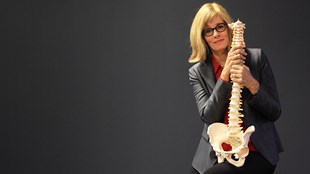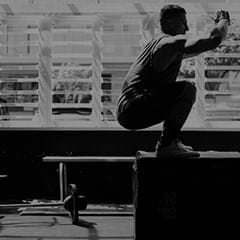Back pain fuels a multi-billion-dollar industry.
US journalist Cathryn Ramin suffered for years and spent a small fortune looking for relief before she decided to put her investigative reporting background to use and delve into it.
The picture Ramin paints isn’t pretty – she says the US industry is rife with false promises and procedures that can make pain worse, not better.
She chronicles her discoveries in Crooked: Outwitting the Back Pain Industry and Getting on the Road to Recovery.
“A great deal of what was on offer was not really effective, there was no evidence base for it – the medical literature made that very evident – and it contradicted itself frequently.
“That’s how I got set on the path for this book, because I’m an investigative reporter, I have been for four decades. If I can’t sort this out I’m reasonably sure most other people can’t!”
Ramin soon found out it was a big problem; people driven by the hope of escaping their own pain to choose treatments not based on any clinical evidence.
In her own case, an MRI scan revealed she had what is called “degenerative disc disease”, which usually means a trip to the surgeon.
“There’s no such thing as degenerative disc disease,” she says. “In the US it is very definitely a marketing term. It’s like saying you need surgery for your grey hair. It was an extremely common diagnosis, and people would decide to have surgery based on that.”
Partly this is due to MRI scans revealing “problems” that many people without pain can also have, she says. These include herniated discs, flat discs, bulging discs, facet impairment and other structural problems. “We’ve known since the 1980s that MRIs, in terms of low back pain, are not diagnostic.”
Very often a diagnosis of degenerative disc disease fails to mention this is a condition common to everyone as they age, says Ramin.
She also casts doubt on chiropractic, epidural steroid injections and spinal fusion surgery (from a group of 100 back surgeons who were asked if they'd undergo spinal fusion, only one said they would). All of which might have you wondering what she thinks does work.
“In the majority of cases, hurt does not mean harm, that’s one of the hardest things for people to grasp. Everything we know about hurt says stop.”
A muscle in spasm is the brain panicking, she says.
“The brain thinks ‘Spine in danger! Spine in danger!’ And it slams on the brakes. The brain’s idea of how to slam on the brakes is to spasm all of those muscles.”
The trick is to try and override the brain and keep moving. Staying in bed and not exercising will only make your recovery more difficult.
Ramin says her work has turned her into a kind of “back whisperer” – not as New Agey as you might think – which is a bit like being a coach with orthopedic knowledge who devises a series of effective exercises and helps sufferers stay motivated to do them.
“Along the way, I pulled on my gym clothes and tested interventions that had reliably brought relief to many people, so that I could offer a firsthand report.”
Follow the freshest thinking @fitplanetmag.








